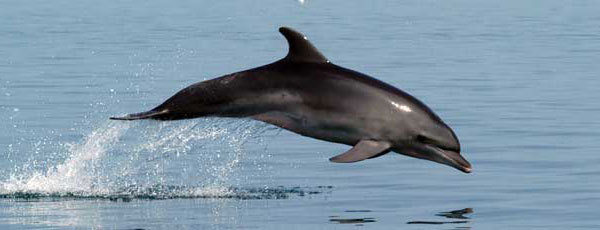Dolphins of Greece
- Vonitsa, Greece
- Volunteer Vacations

| from $2,495* per person | 8 Days | April-September |
| Simple accommodations | Exertion level: 3 | |
| Operator: Earthwatch Institute | 12 people max | |
Loading map, please wait...
Locations visited/nearby
Amvrakikos Gulf , research , bottlenose dolphins , boat , conservation , dorsal fins , earthwatch , Dolphins of Greece , Greece
0 testimonials about this trip.
1 testimonial about the provider, Earthwatch Institute:
-
Reviewer: L. Reifschneider
located in
St. Louis,
MO
USA
Elephant conservation is what drives my travel destinations. However, I always come home counting the blessings of new friends and an understanding of a culture and way of life I possibly would otherwise have never been introduced to. Through the Earthwatch projects I participate in, I am learning just how big and wonderful this world is.
Itinerary
On the ExpeditionTrack and survey bottlenose dolphins in Mediterranean waters to help scientists understand and combat the main threats to them and their ecosystem.
Based in the charming Greek village of Vonitsa on the Amvrakikos Gulf, you’ll have the opportunity to experience traditional village life as you help researchers conduct daily surveys on the area's bottlenose dolphins (Tursiops truncatus). From a small research vessel, you’ll scan the water for signs of dolphin activity. Your team will search for dolphins and once found, you will follow them, and record information on their numbers, group composition, behaviour, movement patterns and interactions with the area’s fishing industry. The research team identifies individual dolphins by looking at distinguishing natural marks such as scars, bite marks, nicks, and notches in their dorsal fins. You will find yourself in the middle of a dolphin group, occasionally including calves or newborns. Dolphins often approach the research boat to bowride, even when the boat is moving slowly, so you’ll have a chance to see them up close and if you get lucky you might even hear their echolocation clicks and whistles.
Back at the field station, you’ll help enter data and prepare digital images of these dorsal fins to compare them and match them with the project catalogue to identify which individuals where seen in the field. Your days will start early, but you will have some free time each afternoon for resting or otherwise enjoying the quiet coast.
Meals and Accommodations
You’ll share a comfortable and large loft with a wooden floor, bunk beds, and a bright living area with the other volunteers on your team. A fully equipped apartment next door provides an open kitchen and living room, a balcony, two bathrooms (one for the volunteers and another one for the staff), an office, and rooms for the research personnel. Bathrooms are conventional, with showers, hot water, and flush toilets. Housekeeping, including cooking and cleaning up, are communal activities, though you may opt to enjoy Vonitsa's quaint and inexpensive restaurants when the mood strikes you. Juices, soft drinks, and ice are always available.
About the Research Area
The village of Vonitsa, where the field station is located, lies on the southern coast of the Amvrakikos Gulf, a virtually closed basin that is one of the most productive coastal areas in Greece, its largest and one of its most important wetlands. The Gulf is designated as a Ramsar site and as a Special Protection Area. It has rocky pebbled beaches and is surrounded by densely wooded mountain peaks, verdant plains, lakes and rivers, and traditional villages inhabited by hospitable people. The Amvrakikos Gulf is not a glamorous tourist destination, and so retains a genuinely traditional Greek environment.
The Byzantines built a large castle on the hill of Vonitsa, and subsequent Turks and Venetians, made their own mark upon the structure. Illuminated at night, the castle is a beautiful sight from below, and offers rewarding views of the Gulf from its heights. In this quiet, welcoming seafront village you can sit and enjoy good food or a café frappé (iced coffee) at the traditional cafes and tavernas. Large sea turtles can be spotted from the coast, or whilst out surveying, and even inside the port among the moored boats.
The economy in the area is simple and includes fishing, fish-farming and agriculture. Tourism is relatively undeveloped. Locals are very friendly and sometimes curious about foreigners. In Vonitsa everyone knows everyone else and new faces in town may draw some attention. Most people speak exclusively Greek but many can manage to communicate with a few words of English.
More information from Earthwatch Institute:
- View trip on provider's website
earthwatch.org/expeditions/dolphins-of-greece… - Company profile, experience, and history
- View all of their trips
- Email this trip page to a friend
-



Comments from Facebook